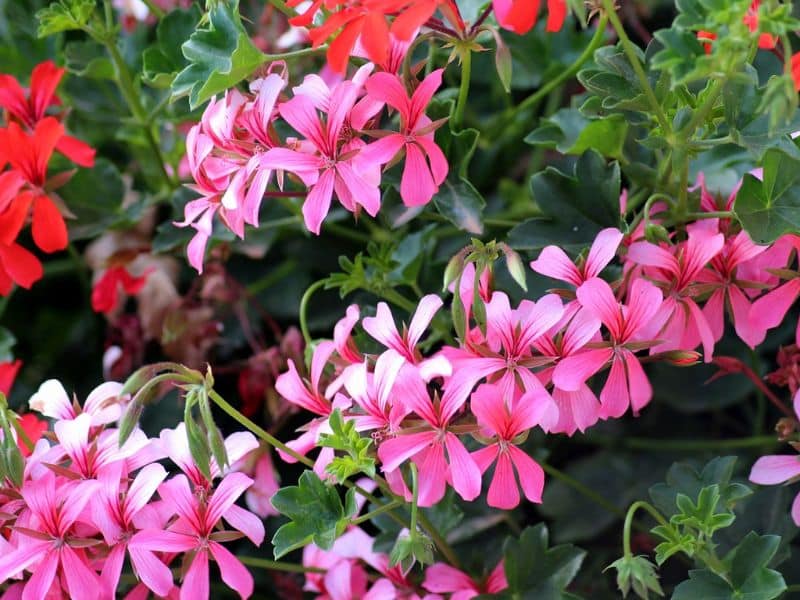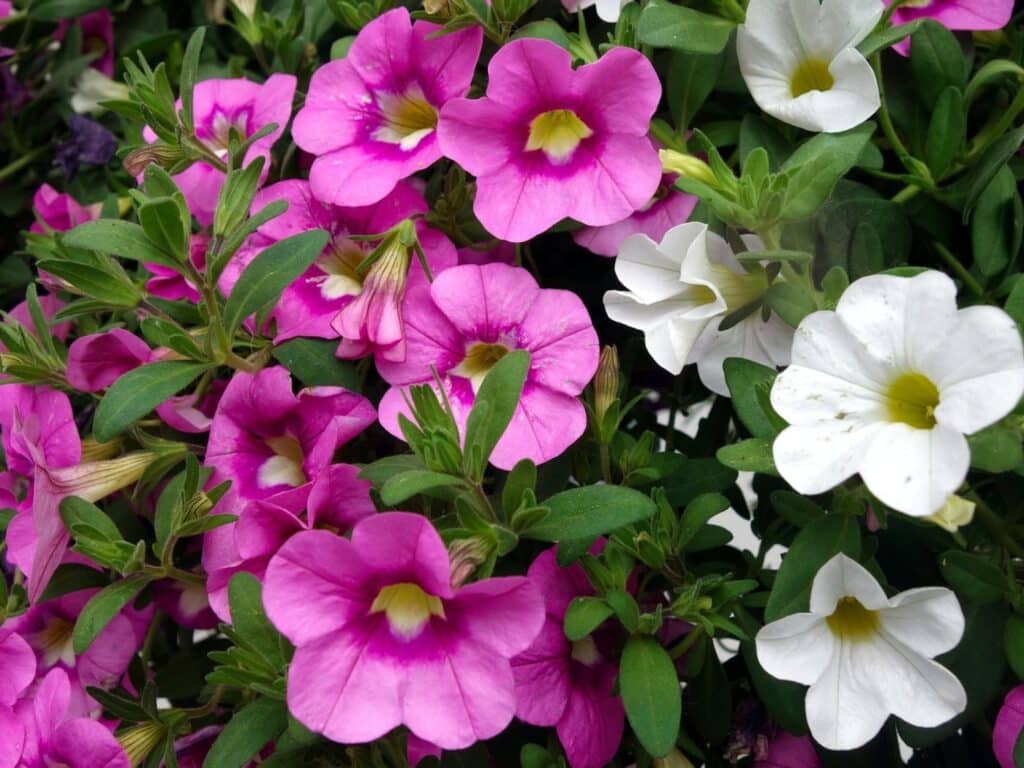Ever found your petunias looking more wilted than wonderful? You’re not alone. Overwatering is a common mistake that can leave your blossoms looking less than their best. It’s a tricky balance, knowing just how much hydration these vibrant flowers need.
Recognizing Signs of Overwatering
Overwatered petunias may exhibit several distinctive symptoms. Stay vigilant for these changes to avoid irreversible damage.
Yellowing Leaves
One of the initial signs of an overwatered petunia is the yellowing of leaves. This doesn’t mean a single yellow leaf. Instead, you’ll start to notice multiple leaves turning various shades of yellow. This discoloration is a telltale signal that the petunia is getting more water than it can absorb, causing the leaf pigmentation to fade.
Wilting Despite Moist Soil
Surprisingly, overwatered petunias may well wilt, similar to how they would behave when parched. If your petunias are wilting, but the soil feels damp, then overwatering could be the guilty party. Ongoing wilting, even with constant soil moisture, is a clear giveaway of the plant’s distress.
Root Rot Symptoms
Overwatering can lead to root rot, a severe petunia ailment. Look out for dark, squishy roots, which can be a clear sight of this issue.
The plant’s growth may well be stunted, and the petunias may lose their vibrancy. Frequent oversight, or gently removing the plant from its pot to check the roots, can help spot this problem before it becomes extensive.
Mold or Algae on the Soil Surface
A persistent moisture around your petunias may well invite unwanted guests – mold or algae. If you notice green or white, fuzzy substances on the soil or the base of the plant, it’s a sign the plant’s home is too wet.
Cutting back on watering and ensuring proper air circulation can help fix this. Remember, it’s crucial to provide your petunias with the right conditions to flourish.
The Science Behind Overwatering

Let’s now dive deeper into the science of why overwatering is such a misstep for petunias. We’ll look at how over-watering impacts petunia roots, what happens when there’s oxygen deprivation in the soil, and the overall effect on plant health.
How Water Affects Petunia Roots
Water is vital for petunias. It aids in nutrient absorption and supports the plant’s growth. But, just like everything else, too much of it can cause trouble. Overwatering leads to waterlogging in the soil.
The roots get drenched, blocking the flow of oxygen. This situation makes it challenging for the roots to perform their nutrition absorption task, leading the plant to a weakened state.
Oxygen Deprivation in Overwatered Soil
You may well be thinking, plants need carbon dioxide to prepare their food, then why do their roots need oxygen? Well, that’s an intriguing part of plant science. While the leaves use carbon dioxide for photosynthesis, the roots breathe in oxygen.
When the soil is overwatered, it gets compact, leaving no room for oxygen. This situation results in the roots suffocating and eventually decaying. That’s why it’s crucial to strike a balance when watering your petunias.
Impact of Overwatering on Plant Health
Finally, let’s discuss the overall impact of overwatering on your petunias. Beyond the primarily affected roots, excess water can lead to diseases in the entire plant too. Fungus thrives in overly wet conditions and can quickly spread, causing ill-health to your petunias.
Furthermore, overwatering can lead to nutrient leaching, leaving your plants malnourished. So, while you may well be showering your petunias with water thinking you’re feeding them, you may well be doing more harm than good. Remember, when it comes to watering petunias, less is often more.
Caring for Overwatered Petunias
Reviving your overwatered petunias doesn’t have to be difficult. With the correct care and methods, you can nurse these vibrant flowers back to health.
Adjusting Your Watering Schedule
It’s time to revise your watering routine! Overwatered petunias often indicate that they’re getting more water than they can handle.
Try reducing the watering frequency; instead of daily watering, aim for every other day or even twice a week, depending on the season and the weather. Monitor your plant closely: if the top inch of soil dries out, it’s time for a drink!
Improving Soil Drainage
A crucial aspect of nursing your petunias back to health is enhancing the soil’s drainage. Overwatering usually leads to waterlogged soil, poor air circulation, and inevitably root rot.
You can improve your drainage by adding organic matter, such as compost or well-rotted manure, to your soil. If you prefer a non-organic approach, perlite or sand also works wonders.
Techniques for Soil Aeration
Aerating your soil can be a game-changer for your overwatered petunias. Soil aeration helps to break up compacted soil, improves oxygen circulation, and facilitates better water penetration.
You can aerate your petunias’ soil using simple garden tools such as a fork or a hand cultivator. Gently loosen the soil without damaging the root system.
Preventative Measures for Petunia Care
To prevent overwatering, let’s focus on a few key measures you can incorporate into your petunia care routine.
Choosing the Right Soil Mix
Using an ideal soil mix is crucial for healthy petunia growth. Choose a well-draining soil mix that retains some moisture but doesn’t become soggy.
An effective mix could consist of one part peat moss, which promotes root growth, one part garden soil for natural nutrients, and one part perlite to boost aeration and drainage.
Proper Pot Selection with Adequate Drainage
Select pots with sufficient drainage holes to prevent water from sitting at the bottom. Remember, stagnant water may lead to root rot in your petunia.
Plastic pots retain moisture longer, so if you’re watering-prone, opt for clay or ceramic pots which facilitate quicker evaporation.
Monitoring Environmental Humidity
Make sure to keep environmental humidity levels in check. If humidity is high, your petunia may absorb water from the air, reducing the need for watering. Use a digital hygrometer to accurately measure humidity, ensuring it stays below 50% for indoor petunias.
Using a Water Meter for Precision
A water meter can be an invaluable tool for avoiding overwatering. It provides precise information about soil moisture levels at different depths, which helps you adjust the watering frequency and volume accordingly. Remember, it’s always better to use objective measurements instead of subjective judgement when taking care of your petunias.
Reviving Severely Overwatered Petunias
Let’s take a closer look at the steps that can be taken to revive your severely overwatered petunias.
Steps to Take Immediately After Noticing Signs
On spotting classic signs of excess watering, you need to take quick, decisive action.
- Stop the water source: Above all, stop watering your petunias. It’s crucial to halt the source of the trouble right away.
- Repot the plant: To further improve the situation, repot the plant in fresh, dry soil. This can aid in reducing surrounding moisture and preventing further complications.
- Trim affected areas: If it’s apparent that a part of your petunia plant has suffered more than the rest, don’t hesitate to trim these areas. This will help the plant conserve energy to revitalize the healthier sections.
Long-term Recovery Tips
Petunias need a good amount of care post a severe overwatering crisis. Here are some guidelines to remember in the long run.
- Follow a strict watering schedule: With time, aim to establish a watering schedule that prevents overwatering. Stick to watering only when the top inch of soil is dry, and remember that it’s better to under-water than over-water.
- Increase sunlight: Expose your petunias to ample sunlight, which will aid in evaporation, thus reducing excess water in the soil.
- Monitor the plant closely: Keep a keen eye on your petunias during recovery. Watch out for any new signs of stress or overwatering, and be prepared to adjust your care approach as needed.
Through careful attention and correct measures, your overwatered petunias can have a strong chance of revival and flourishing once again.







